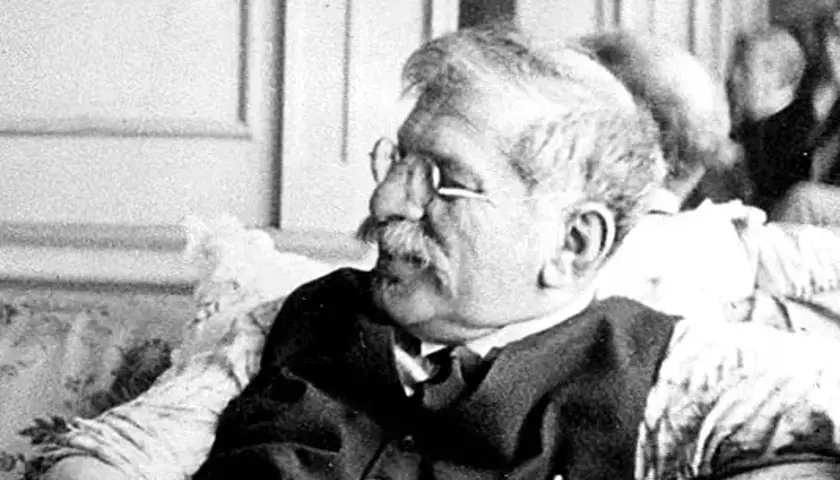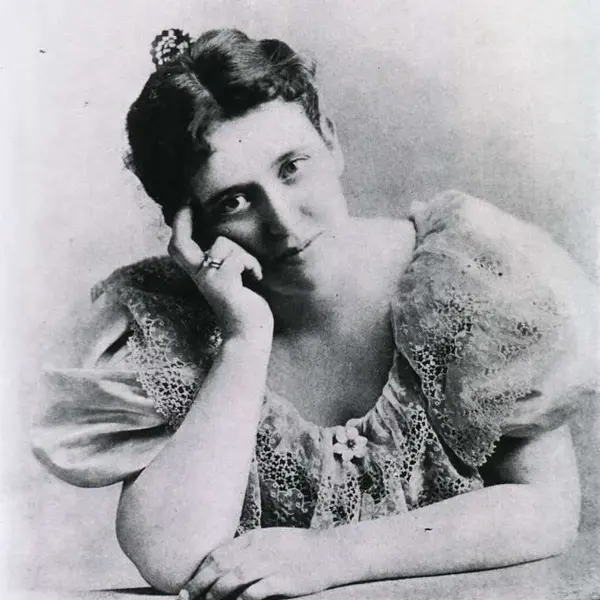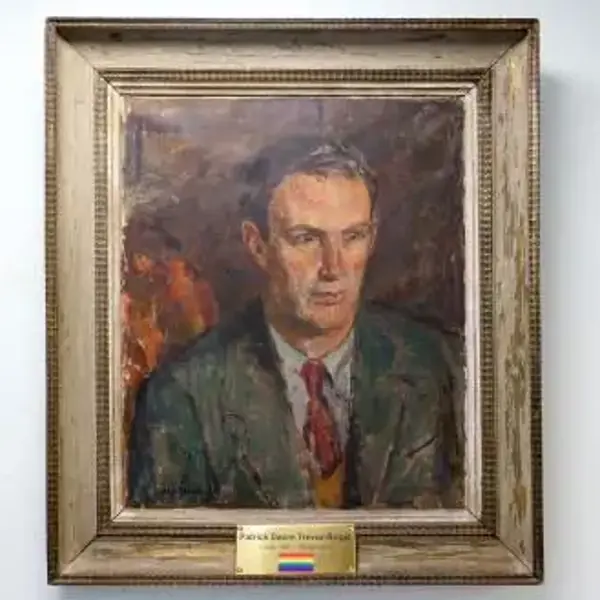Pioneers of equality
Pioneers of equality
The people who helped open a route for LGBT+ doctors into medicine
February sees the UK observe LGBT+ history month, with the theme of this year’s celebrations focused on medicine and healthcare.
In honour of the many LGBT+ people who have contributed to medicine and social change, and who helped pave the way for future gay, lesbian, bisexual and trans doctors entering the medical profession, the BMA is looking back and celebrating five notable figures from history.
In retelling their personal and professional stories, the association hopes readers can gain a greater recognition and appreciation of the important and pioneering roles these doctors played in the history of healthcare.
Magnus Hirschfeld
Regarded today as one of the earliest medical pioneers of LGBTQ healthcare and rights, Magnus Hirschfeld was born in 1868 in the Polish city of Kołobrzeg.
After qualifying as a doctor in 1892, Dr Hirschfeld’s career initially focused on preventive medicine. However, his professional interests soon turned to the study of human sexuality and gender.
Deeply affected by his experiences with gay patients, many of whom had ended or sought to end their lives after being unable to come to terms with their sexuality, Dr Hirschfeld sought to challenge the prevailing public and scientific belief that categorised same-sex attraction as an aberration or ‘perversion’.
A co-founder of the Scientific-Humanitarian Committee, which campaigned for the decriminalisation of sexual relations between men, Dr Hirschfeld went on to establish the Institute for Sexual Science in Berlin in 1919.
The Institute provided medical care, including sexual health and gender-affirming treatment, to members of the city’s LGBT community along with information, guidance and support throughout the Weimar Republic era in Germany.
Despite his ground-breaking studies, Dr Hirschfeld faced intense opposition and even violent assault owing to his professional work and advocacy, and because he was gay and Jewish.
Much of the Institute’s literature and research was lost after the facility was ransacked and permanently shut down by the Nazis in 1933, with Dr Hirschfeld, who had already moved to Nice, dying two years later.
Dr Hirschfeld is remembered today as a leading medical professional advocate for gay rights and as an early proponent of non-binary conceptions of gender.
Sara Josephine Baker
Dr Baker achieved many firsts during her medical career, practising at a time when female physicians were an exceptional rarity.
Born in New York state in 1873, Dr Baker qualified and began practising as a doctor around the turn of the last century and went on to forge a hugely influential career in public health.
Motivated by the appalling child mortality rates of early 20th century New York, Dr Baker became the inaugural director of the city’s Bureau of Child Hygiene.
Emphasising education and prevention, she used her position to organise vaccination programmes, midwife training and post-natal care initiatives, actions that helped to reduce childhood deaths.
Dr Baker went on to become the first woman to obtain a PhD in public health from what is today the New York University School of Medicine. She was also instrumental in helping to track down Mary Mallon better known to history as ‘Typhoid Mary’, who had been responsible for multiple outbreaks of the disease throughout New York city.
Dr Baker lived with her partner the novelist Ida Alexa Ross Wylie until her death in 1945.
Louisa Martindale
Born in 1872 as the eldest daughter of a suffragette, Dr Martindale became determined to study medicine from a young age.
After completing training and obtaining her medical degree in 1905, she entered practice in her home city of Brighton, becoming the area’s first female GP, and later founding the New Sussex Hospital for Women.
The First World War saw Dr Martindale serve for a time in France as a surgeon with the Scottish Women’s Hospital.
Following the war, she established herself in London as a consultant surgeon and began to pioneer treatments for conditions such as fibroids and breast cancer using orthovoltage X-rays. In 1929 she helped establish the Marie Curie Hospital which aimed to provide X-ray treatments to women patients.
Outside of medicine, Dr Martindale was a staunch advocate for women’s rights frequently writing about and lobbying government on promoting gender equality and equal opportunities within medicine.
Dr Martindale lived with her partner Ismay FitzGerald for more than 30 years and did not shy away from publicly expressing her love for her in her 1951 autobiography. Last year saw the University Hospitals Sussex NHS Foundation Trust open a new 28-clinical ward facility named in honour of Dr Martindale’s legacy.
Alan L Hart
Radiologist Alan Hart’s contributions to medicine in the early 20th century, specifically his revolutionary approach to using X-rays for early diagnosis of TB, are rightly acknowledged.
His clinical achievements are not the sole part of his legacy, however, with Dr Hart now recognised as one of first trans men to work in the US medical profession.
Born Alberta Lucille Hart in 1890, the future Dr Hart showed a preference for wearing male clothing from early childhood, with the desire to present as male largely respected by his family.
As he got older, however, the struggle to identify as and be accepted as a man within wider society proved more and more challenging. It was as a medical student that Hart finally confided in a college counsellor, a process that helped him realise his determination to realise his true self.
After undergoing an elective hysterectomy in 1917 and formally adopting Alan as his first name, Dr Hart strove to advance his medical career.
Despite facing frequent challenges regarding his past identity, Dr Hart was able to devise new approaches to diagnosing and managing TB, then one of the most significant infectious diseases in the USA.
Outside of medicine, Dr Hart was a published author writing numerous short stories and novels until his death in 1962.
Patrick Trevor-Roper
In keeping with all of those featured in this article, Mr Trevor-Roper’s life story was one of immense bravery and determination.
The son of a GP, he gained his medical qualification shortly before the Second World War, and went on to serve in the conflict as part of the New Zealand medical corps. After leaving the armed forces, Mr Trevor-Roper decided to pursue the specialty of ophthalmology, later qualifying as an eye surgeon.
At a time when sexual relations between men was still a criminal offence punishable by imprisonment, Mr Trevor-Roper was one of just three openly gay men to give evidence to the 1955 Wolfenden Committee.
The Government inquiry, which sought to examine whether sexual relations between men should be decriminalised and later led to the Wolfenden Report, saw Mr Trevor-Roper argue that homosexuality was neither an illness nor should it be treated as a crime.
His contributions to the inquiry are credited with helping to bring about legal change that finally saw male homosexuality decriminalised in 1967, with Mr Trevor-Roper remaining a committed gay rights activist for the rest of his life.
During the early stages of the HIV/AIDS pandemic, Mr Trevor-Roper supported the creation of the Terrence Higgins Trust. He also campaigned for a change in the law that allowed reading glasses to be purchased without prescription, and helped to found eye hospitals in Ethiopia, Nigeria and Sierra Leone.
In 2000, just four years prior to his death, the UK government finally amended the law equalising the age of consent for heterosexual and gay sex, something that Mr Trevor-Roper had advocated for as far back as his appearance at the Wolfenden inquiry.







